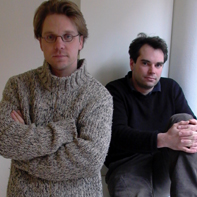27 Ago Sven Goemaere and Miel Cardinael: The workshop as haven of a sculptural approach of design
 The wat we see a design process is mainly determined by our method of working. Our workshop is the safe “haven” where we create our furniture and objects.
The wat we see a design process is mainly determined by our method of working. Our workshop is the safe “haven” where we create our furniture and objects.
After the initial sketches we make a full-scale model, wich is then adjusted, tested and remodelled several times, until ir pleases us both from a formal and functional point of view. This scuptural approach of the design process gives us the advantage that we stay in close contact with the material(s) used during the whole process of the “making of”.
Often our creative process does not start primarily from the relationship between the designer and the client but form our own point of view. This is a luxury position we like to defend, a freedom that we want to see reflected in our designs.
This does not imply that we do not have a feeling or understanding of certain limitations, on the contrary technical and budget constraints are an extra stimulus in a project. Moreover we do not work in splendid isolation but are aware of the macro-economical, social and ecological challenges that our generation faces today. Our most recent projects reflect this philosophy we have worked with flexible modules in which the creative interaction with our client played a pivotal role. The client has the freedom to adjust the piece of furniture according to his/her specific needs and environments of that moment.
We believe a good design consists of different layers. The first impression we want to evoke is a ‘hmm looks nice’. However upon a more close inspection we want to surprise with subtle details, clever joinery, a nice touch of the material… The user should discover the object bit by bit. It is this specific layering that defines the personality of the object and by that we hope we create a bond with its user.
We are aware that this philosophy has become a reflex which we apply also to the designs of others as an act of curiosity: how was it made, how does another designer solve a particular problem both technically and esthetically.
We take our time to mature a design, without being oblivious to the world around us we want to create time-less designs that are not affected by superficial trends and lifestyles.
Ideas can mature for years and years in our minds before we allow them to take shape in an object: we allow time to determine the shape, allow the time to change and mature it, eliminating what is in our opinion not needed. An idea should have a sound basis and be original however “innovation” is not the main driver per se: a chair is to sit on, there’s no need to reinvent the process of sitting. Creating things of beauty that have a clearly defined function is more important. Because lightness in our designs is very important, the strength and character of the material play an essential role in the final result.
In the end the whole process of designing a piece of furniture is focused on beauty, the evocation of emotion and the telling of a story inspired by the objects. Our goals are achieved if people love our objects and create a unique bond with them.
More: www.articulado.org

